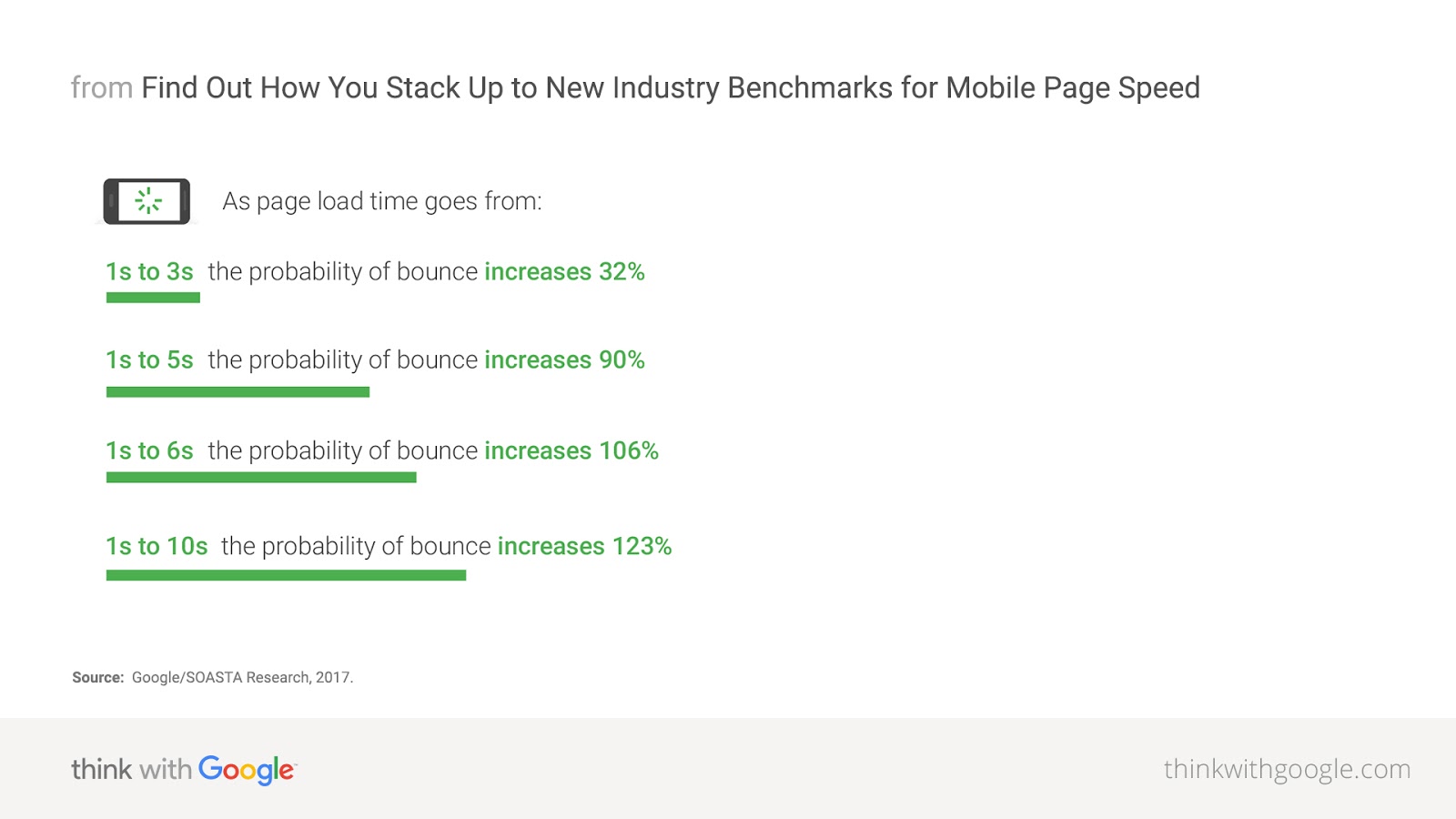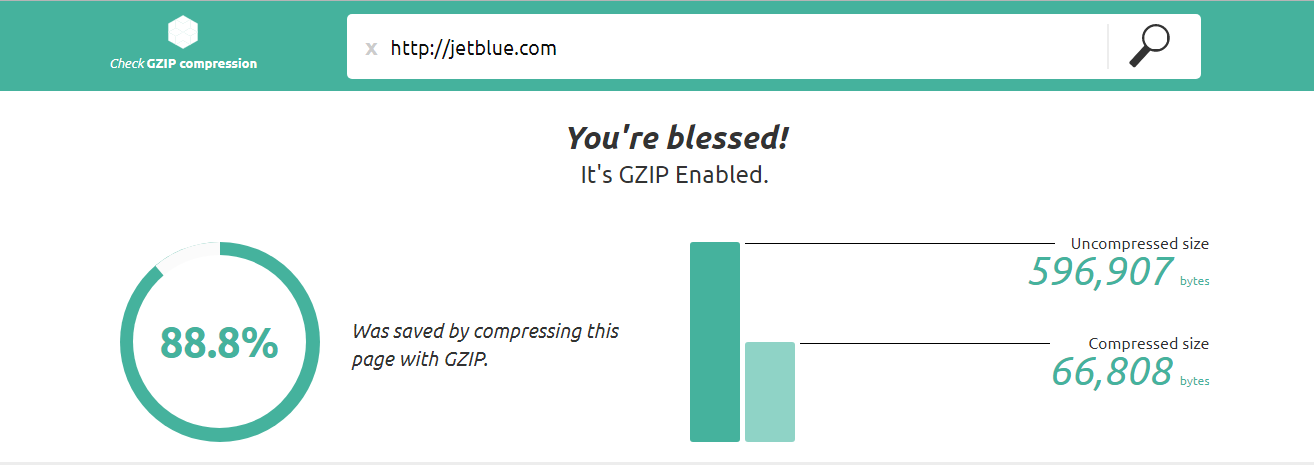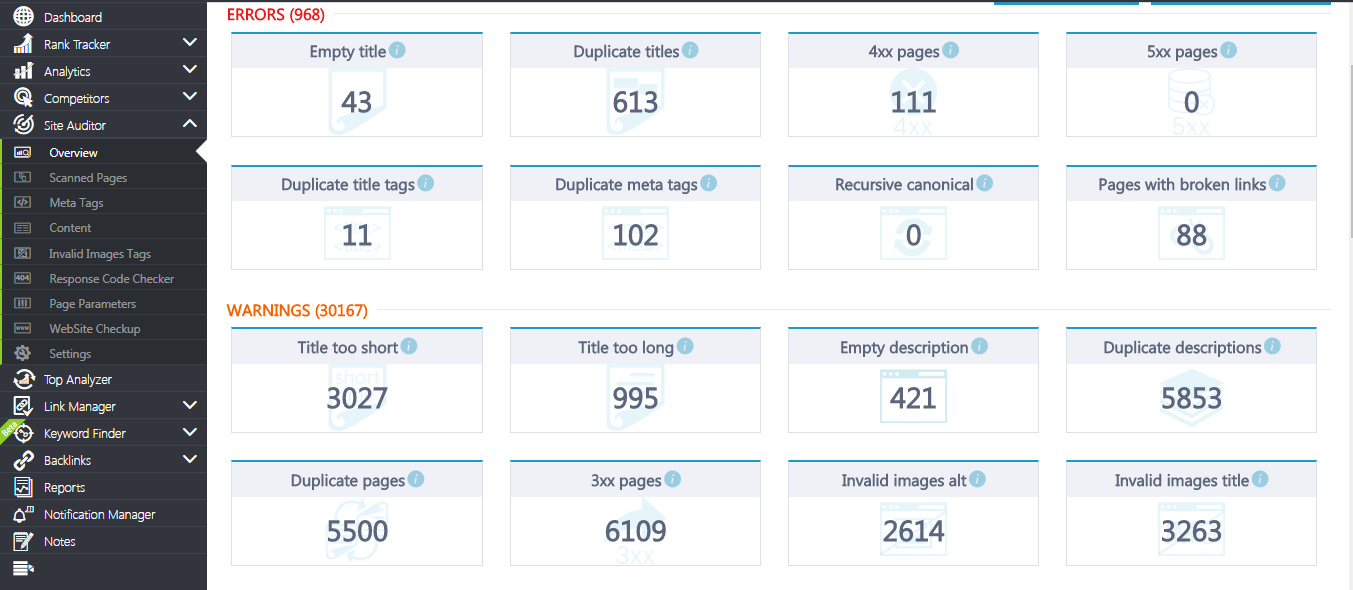Google Speed Update: Why You Should Care About Your Website Performance Now More Than Ever
18 July 2018 Leave a comment ON-PAGE SEO
On July 9, 2018, Google has announced that the page speed update is now applicable to all users. They argue the update by showing numerous studies which prove that user experience matters and load time plays one of the major roles in delivering the best UX.
Google has always been concerned with serving better content to users and also doing it quickly. The new speed update complements the AMP (Accelerated Mobile Pages) update and only concerns mobile devices. However, it’s one of the ranking factors that should not be ignored.
It only affects mobile search rankings which means that desktop users can breath out.
“Faster is better and less is more”, – says ThinkWithGoogle.
Businesses that are at risk
Research shows that there are certain fields that most often fail to deliver the best load time which may enormously increase bounce rates.
If you’re into a travel, healthcare or retail business, it’s high time you reconsidered your website performance. You can quickly analyze the load time of your website by using a free Pingdom tool.
We have taken a random website from a travel sector in order to see at the raw numbers and overall website speed. The load time counted 6.54 seconds which is pretty high and, according to ThinkWithGoogle, it might increase bounce rate up to 123% which is critical for the travel sector.
People are impatient. There are good sides of it as well as bad sides. The good side is that most of our decisions are automatic because we usually tend to decide based on our previous experiences or expectations without a thorough analysis of a situation.
The bad side is that if your competitors are quicker at satisfying impatient client needs, your business will not be performing very well. It can be very disturbing and upsetting that even a well-crafted website with all the fancy pictures and products is likely to fail only because of the speed factor.
The Speed Factors
So, what are the speed factors that you should be aware of if you’re building your website on your own? We will show you some of the basic things that require minimum if none programming skills to increase your website load time.
Image size
However trivial it may sound beginners like me sometimes fall into the trap of uploading every picture that can be found on the web without any formatting to fit your blog structure or personal preferences.
Very often we find a fancy picture and simply upload it without any resizing or cropping the image which is crucial since you may use a lot of images in your posts or within the website pages.
A simple tool that I’m constantly using myself to compress images is TinyJPG.
Also, I once made a mistake having found a pretty cool image which was 4K quality. I didn’t care much about compressing it or even downloading a smaller size of it. The image was around 4 MB which was insane for an image. I used it for a homepage and wondered what happened to my website and why it was loading so slowly.
If you’re a website owner and running a blog or in any way work with content and imagery, then you should take these 2 simple rules into account.
- Download the images only of the necessary size that will fit your layout. Crop them. Some websites, for example, use 900×600 pictures which is clearly stated in their contributor guidelines. Also, you can check our guidelines. We would love to have more contributors!
- Compress images using TinyJPG or any other tool.
Simple as that, but it will save you tonnes of bytes.
Gzip compression
When we analyzed JetBlue travel agency, we found out that they are not using Gzip compression. This may be one of the reasons why their website takes 6.54 seconds to load we thought.
Source: GiftOfSpeed.com
We took a bunch of random Gzip checkers to find out, and they showed us pretty controversial results as to the accuracy of data. You should be careful as to what you rely on. The inaccuracy of data happens everywhere even in Google Analytics.
So, here is what another tool showed us and seems like it’s more trustworthy as we have tried a few others and the output data has matched.
How do you configure your Gzip compression if it’s not enabled? The approach may vary as to what web server you’re using, such as Apache, NGINX or Microsoft IIS. You can check their guidelines to see the detailed and comprehensive information on how to enable Gzip compression.
Your attention span is shorter than a goldfish
According to research at Microsoft, a human attention span had dropped from 12 seconds in 2000 to 8 seconds in 2013. Timothy Egan from “The New York Times” shares his insights on how he feels around the day.
Long story short, he says that he can no longer wait too much without reaching for his smartphone. This is the exact phenomenon we experience on the web or anywhere else in our everyday routine. People simply can’t wait, and this is what’s changing our lives. You as a business and website owner can only align with that change; you can’t fight against it.
The only solution is to increase your website performance and eliminate other issues which influence user experience and SEO, such as broken links, missed descriptions, tags and other issues that can be easily identified with Site Auditor.
Conclusions
The load time of a page or website has always been a game changer for those who were willing to invest in it. Today, it’s even more important because if a business wants to prosper or survive, at least, the only way to keep pace with the Google updates and client needs initially is to take care about the website performance.
A fast responsive website will help your business achieve goals much quicker and effective. Stay tuned!
Tags: AMP, Google Speed Update
Like this article? There’s more where that came from.
- YouTube Hacks Your Online Marketing Agency Can Implement to Boost Video Rankings
- When Less is More: Why We Decided to Remove Backlinks and Link Manager Features
- How to increase your CTR using Schema.org
- How to Get Out of Google Sandbox and Do It Quickly?
- Geolocation Redirect 101: How to Secure Your SEO Localization Efforts?
- Your Ultimate Guide to SEO Reporting with RankActive
- Your 7-Step Guide to Increasing Page Speed
- How to Do SEO Competitor Analysis? Your Checklist for 2019






